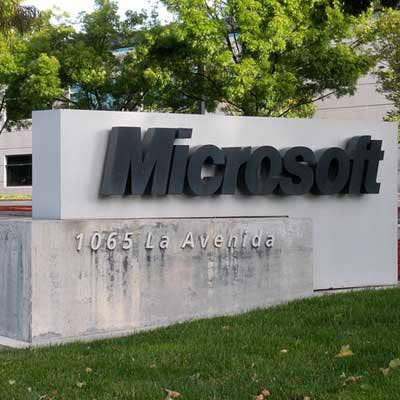10 Key Takeaways From Microsoft Execs On Cloud, AI And Windows

Microsoft's Channel Focus
One year after Microsoft unveiled a wide array of changes aimed at accelerating its business with partners, CRN visited the company's headquarters in Redmond, Wash., to hear from key executives on how the transformation turned out. By many indications, the business has picked up the pace over the past 12 months -- across areas including the Azure cloud platform, Office 365 and Windows 10.
Microsoft executives told CRN that major investments into bringing together salespeople and solution providers have led to increased momentum, while hot areas such as artificial intelligence and security are creating new partner opportunities.
We spoke with a handful of executives ahead of Microsoft's Inspire 2018 partner conference, which is taking place July 15-19 in Las Vegas. What follows are 10 of our key takeaways from the conversations.

Microsoft Salespeople Are Bringing In Partners Earlier
When partners are involved in managing services with customers, consumption of those services grows four times faster, according to Gavriella Schuster (pictured), Microsoft's corporate vice president, commercial partner channels and programs. And when solution providers get involved early on with customers, it significantly increases the velocity of consumption, partners have told CRN. But prior to a year ago, when Microsoft shifted to paying salespeople on Azure consumption rather than pre-commitment sales, salespeople didn't always have the incentives to bring partners into sales deals early on. In the past, Microsoft salespeople were only bringing partners in at the proof-of-concept stage, relatively far into the sales process, Schuster said. That has all changed over the past 12 months, and solution providers are now being brought in near the beginning of the sales process. "Now we're bringing [partners] in as soon as we see that it's a sales-qualified lead," she said, which is helping to drive greater consumption.

CSP-EA Conflict Has Dropped Significantly
At last year's Inspire conference, Schuster said Microsoft salespeople would receive major incentives to promote Cloud Solution Provider (CSP) program subscriptions instead of traditional Enterprise Agreement (EA) licenses. The move was meant to reduce the conflict between those two ways of procuring Office 365 seats and Azure usage. In an interview with CRN, Schuster said there are clear signs that it's working. Not only did Azure revenue grow 98 percent year over year, but concerns from partners about the issue have largely vanished, she said.
"At the beginning of the year, probably for every two opportunities, you'd have a conflict half the time. Now it's probably one out of 15," said Schuster. "I can tell from my inbox."
CSP's monthly subscription can be adjusted based on usage from month to month, in contrast to the EA, which involves annual agreements. "The thing we're trying to help our sellers understand is that it grows month over month. When you get a customer in and they're doing month over month, it grows much faster," Schuster said. "Because if you just try to capture all of that [demand] one year at a time, the customer's never going to believe you on how much it's going to grow. So they're only going to pay you for less."

Microsoft Rolls Out An Azure 'Accelerator'
Executives disclosed to CRN that Microsoft has introduced a "kicker" for new Azure customer-adds for partners. Specifically, this accelerator, which launched in January, helps partners who are building a business around particular Azure services who have had to make a larger up-front investment.
Schuster told CRN that if a partner has a new customer that is consuming, for example, more than $1,000 in Azure over the first three months, the partner would receive $4,000. The campaign ensures that partners who get their new customers up to a certain threshold in the first three months gets back the amount of dollars that the customer paid Microsoft. After that, partners will continue to be paid out on the customer's consumption of the cloud service.

AI Is A 'Complement,' Not A Product
In April, Microsoft CEO Satya Nadella contended the company is surpassing cloud competitors by offering a greater number of artificial intelligence services "than any other cloud provider." Nadella cited offerings such as the Bot Framework, used for integrating chatbots, which has attracted more than 300,000 developers. Microsoft executives who spoke with CRN, however, emphasized that AI isn't a product for partners to make money from, per se. "It's not that a partner would make money on bots -- the partner would complement their services or their application with a bot," said Eduardo Kassner, CTO and chief innovation officer for Microsoft's One Commercial Partner organization. For instance, a basic way to get started is to integrate a FAQ bot to provide support on a website in lieu of adding a call center, he said. "AI is a complement. AI is an addition," Kassner said. "It's not [selling] AI -- it's [doing] what you're doing enhanced with AI. And so that's when it gets really tangible. Some of the best scenarios you see are where it's not AI beginning to end. It's when somebody's trying to do something, and AI enhances the quality of it."

Prioritizing The Selling Of Partner Services
Microsoft wants partners to know that it is heads-down focused on selling third-party services at the same priority as selling its own services. In fact, Schuster said that the company is doing everything it can to make that equivalency known to its channel ecosystem.
To make that a reality, Microsoft is relying on AppSource -- an app store for both Microsoft and partner applications -- as its one-stop shop to house both partners, as well as its own products and services. Microsoft wants customers to know that AppSource will be the common catalog for all solutions, according to Charlotte Yarkoni, corporate vice president for Microsoft Azure.

Simplifying Incentive Programs And Enabling New Workloads
Simplification and transparency for partners is the name of the game this year for Microsoft. The company last year committed to collapsing the number of incentive programs from more than 200 programs, and it's still in the process of boiling some of its processes down even further. Schuster said that in addition to simplifying partner engagement and incentives, the engineering team is working to simplify tooling for partners and create single engagement points.
Perhaps most importantly, rather than focusing on whether a customer contract is brand-new, or being renewed, Microsoft wants to help partners find and build new workloads across new solution areas. "We are moving everything to kind of focus on that, and it will help our partners to know more consistently that it doesn’t matter where the customer was at in that journey," Schuster said. "If they have a new workload, that's what we want to do together."

Head To The Cloud For Greater Security
As physical facilities take a back seat to intellectual property as the primary assets for many businesses, the cloud is helping many companies fill in the security gaps and change how they are thinking about security. The cloud is letting partners and customers "democratize security technology" and share defensive resources to face threats together, Ryan McGee, director of security for Microsoft, told CRN.
Microsoft is running machine learning against data being stored in the cloud to determine risk level and identify current threats. The company is also working with third-party security providers that can plug into Microsoft's security graph. Microsoft is investing to the tune of $1 billion a year for security-related R&D, and wants its partners and end customers to turn to Azure and Office 365 to do some of their security heavy-lifting.
Microsoft 365 Is Not Just A Bundle
Launched one year ago, the Microsoft 365 suite brings together Office 365, Windows 10 and device management into a single comprehensive offering for businesses. Since its launch, the suite has evolved to offer "deeper and bigger opportunities to our partners than each of the stand-alone products before," said Microsoft 365 General Manager Gio Mezgec. One example is that Microsoft 365 enhances cybersecurity by providing security capabilities that are integrated across the products, he said. "There are lot of things we can do by bringing all of these together. Some are here already in the product, and some are where we want to go," Mezgec said.
"Admittedly, the idea when we announced it last year was that it was more of a bundle," he said. "But now that we've integrated the product team, I think that the future is bringing all of these things in a more synergistic approach -- so that customers can realize a modern workplace more effectively, and so that partners can build on top of it."
New Hardware Aimed At Driving Windows 10 Adoption
As of May, Windows 10 was running on 39.3 percent of all Windows PCs, according to analytics firm Net Applications. However, Windows 10 continued to trail Windows 7, which is running on 47.3 percent of all Windows PCs, the firm reported. Microsoft executives believe that new hardware should help to drive the transition from Windows 7 to Windows 10 in the lead-up to the end of Windows 7 support in January 2020. Michelle Niethammer, who works with OEM hardware partners as general manager for Microsoft's Partner Device and Solutions team, pointed to increasingly common features in Windows 10 PCs such as Windows Hello facial authentication, touch screens and digital pen support, as well as enhanced portability and battery life for new devices. Some OEMs are also releasing Windows 10 devices that are "always connected" with the ability to switch automatically between Wi-Fi and LTE, she noted.
"It's really about trying to modernize the PC," Niethammer said. Users "may not know the scenarios that exist and why they'd want a new PC. Yes, [some users are] still using Windows 7, because they don't understand what's possible. And we want their new PC to do so much more than what your Windows 7 PC did."

Partner Focus Going Strong
Unlike its competitors in the cloud arena that often have very large direct businesses, more than 95 percent of Microsoft's revenue flows through channel partners, Schuster said.
With that in mind, Schuster said that partner-led Microsoft has simplified -- and figured out -- what it wants from its partnerships. The company plans to continue this momentum by elevating partner services to be as important as its own services, proving that it continues to be as invested in solution providers as it's ever been, she said. "Overall, the message is we have turned the corner on our partnership and we really are focused on selling third-party services at the same level as first-party services -- we want to sell our partners' stuff as much as we want them to sell our stuff," Schuster said. "And we are doing everything we can to make that equivalency and then open up that entire ecosystem to our partners."